Midseason Fury of the Blooms
When there's too much to be done, sometimes nothing gets done
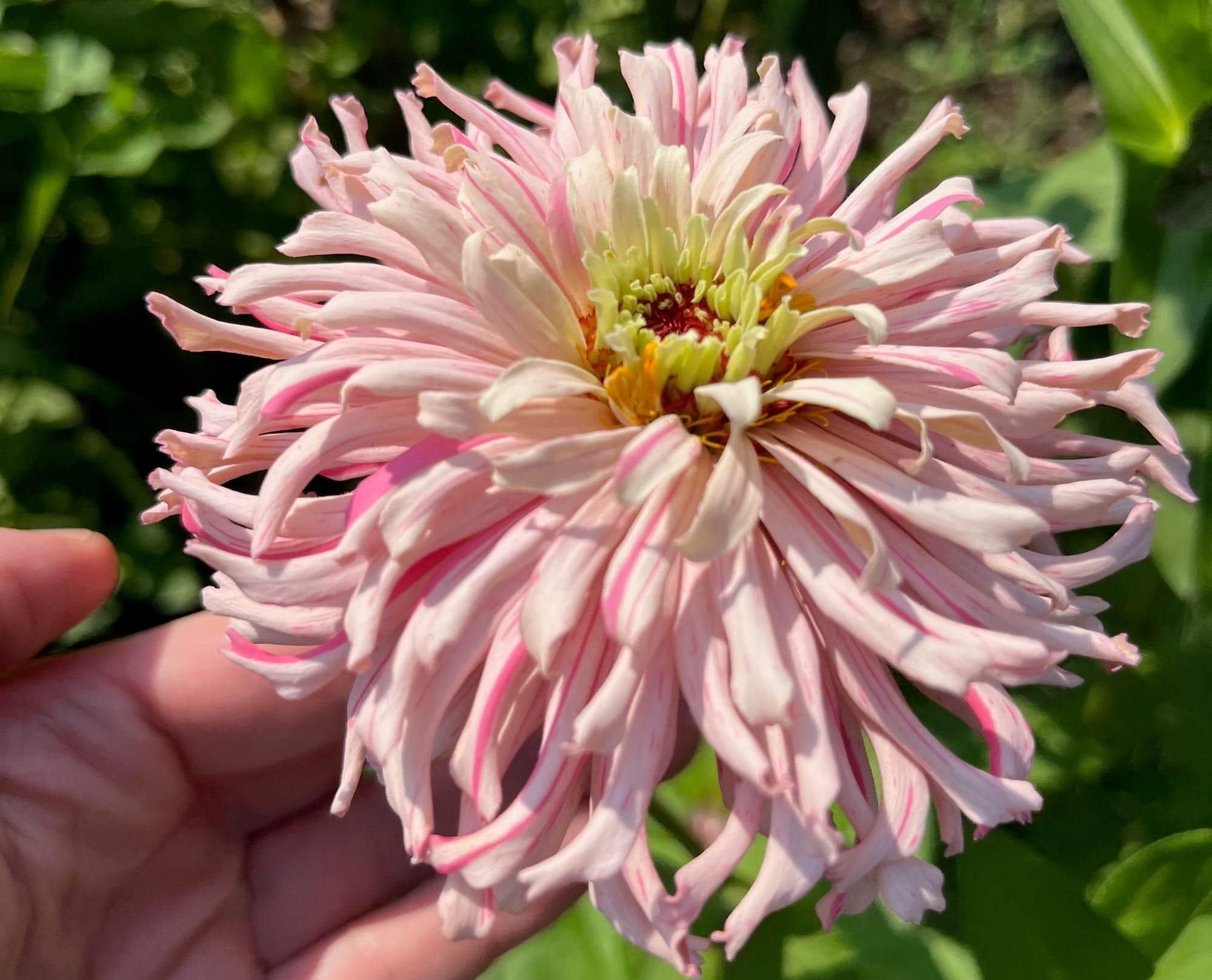
And then you end up inside writing articles. I should be outside pulling weeds in the garden, but it's just too hot and humid. It seems like at some point there is no chance of ever winning against weeds, so one must not be too worried about perfection. Smaller gardens and weeds can be more manageable. But if you have a garden "plot" or larger, and you don't use a lot of chemicals, it never ends. As soon as you've cleared out all the weeds down to the roots, a few days later new ones appear from out of nowhere as replacements.
Instead of getting all the rain in the Spring, which normally happens, the rain landed in the Summer, even though it barely rained in the Spring. This was actually a good turn of events from a dahlia standpoint, because a lot of water on the freshly planted tubers can easily rot them. I did lose a few dahlias to rot, but I'm experiencing the Garden Redo Blues. Whenever you have a bad year and have to start over, the next year is usually a letdown. Many garden annuals (that aren't perennials that return the next year) can look great every year. I mean, a petunia will operate just like a petunia because it's not going through much of a period of getting established. Same with zinnias. The big problem being, you have to replant them from seeds every year unless they're reseeding themselves.
Many perennials don't flower the first year, or they flower late or don't flower much the first year. Then by about the second or third year they are fully established and now have the energy to expend on blooming. So if you have a bad year with a lot of perennials, you'll have to replant, and wait, and wait, and wait. This can create a pileup of a couple years of your garden underperforming. I planted some roses this Spring and got a few flowers here and there, but they won’t get into peak bloom for a few years. They might be flowering nicely next year, but it will be a while before they are 4 foot tall bushes with 50 stunning large aromatic flowers blooming at once.
In the top photo in this article, you can see a striped zinnia. I used to grow both zinnias and some of the broken patterned "peppermint" style zinnias. When you do this, you will get the occasional plant that has both characteristics. Then you can plant the seeds from the striped flowering plant and hopefully get more of them. Though like a lot of crosses made, you are likely to get multiple things. You just keep culling out the undesirable plants so it narrows the plant's pollen options. This is a peppermint style zinnia. They have various amounts of the color breaking, and some will be other color combinations like yellow and red.
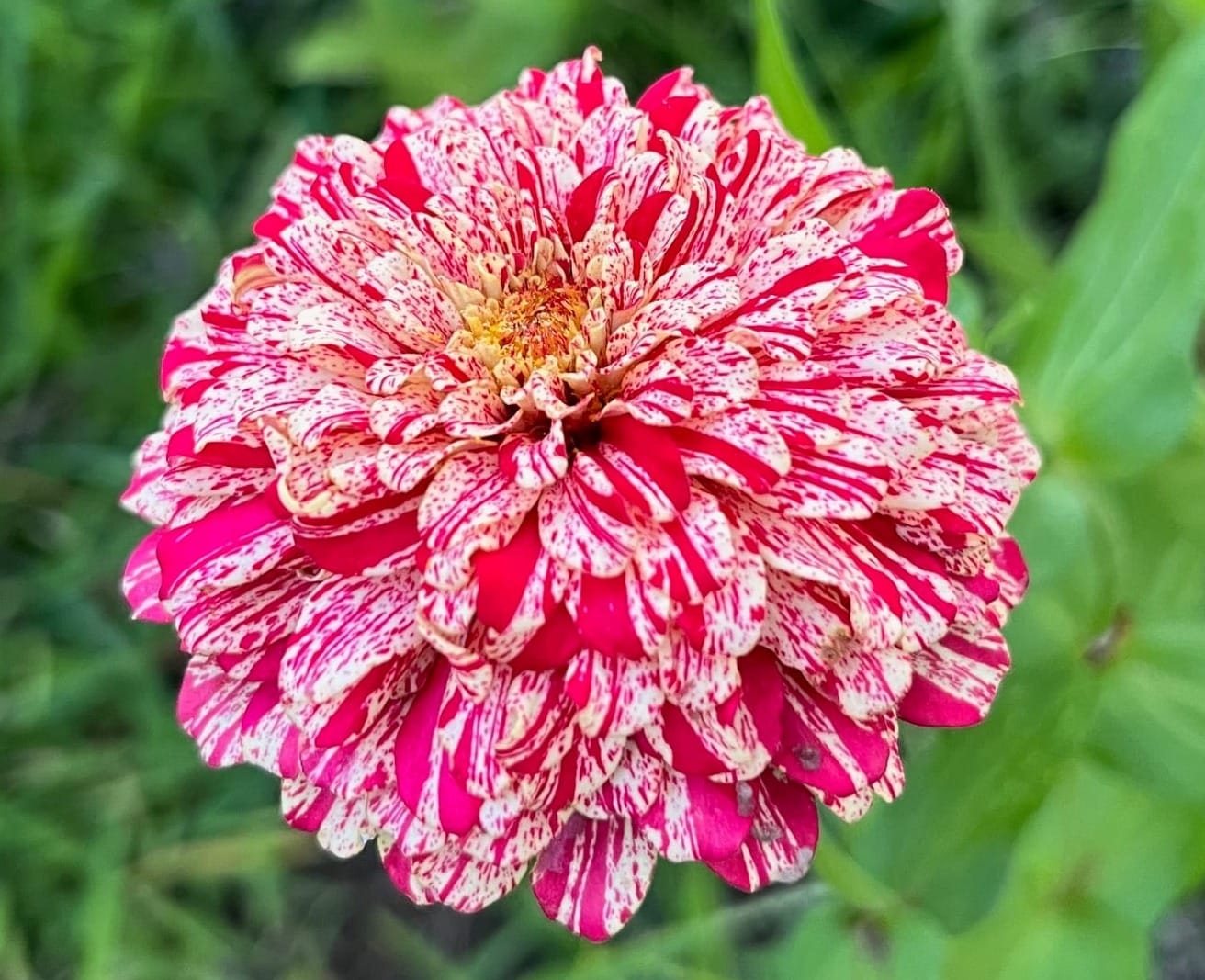
Sunflowers. I had a lot of issues this year with sunflowers, many unexpected. Here is a photo of some volunteer sunflowers that grew taller than the house.
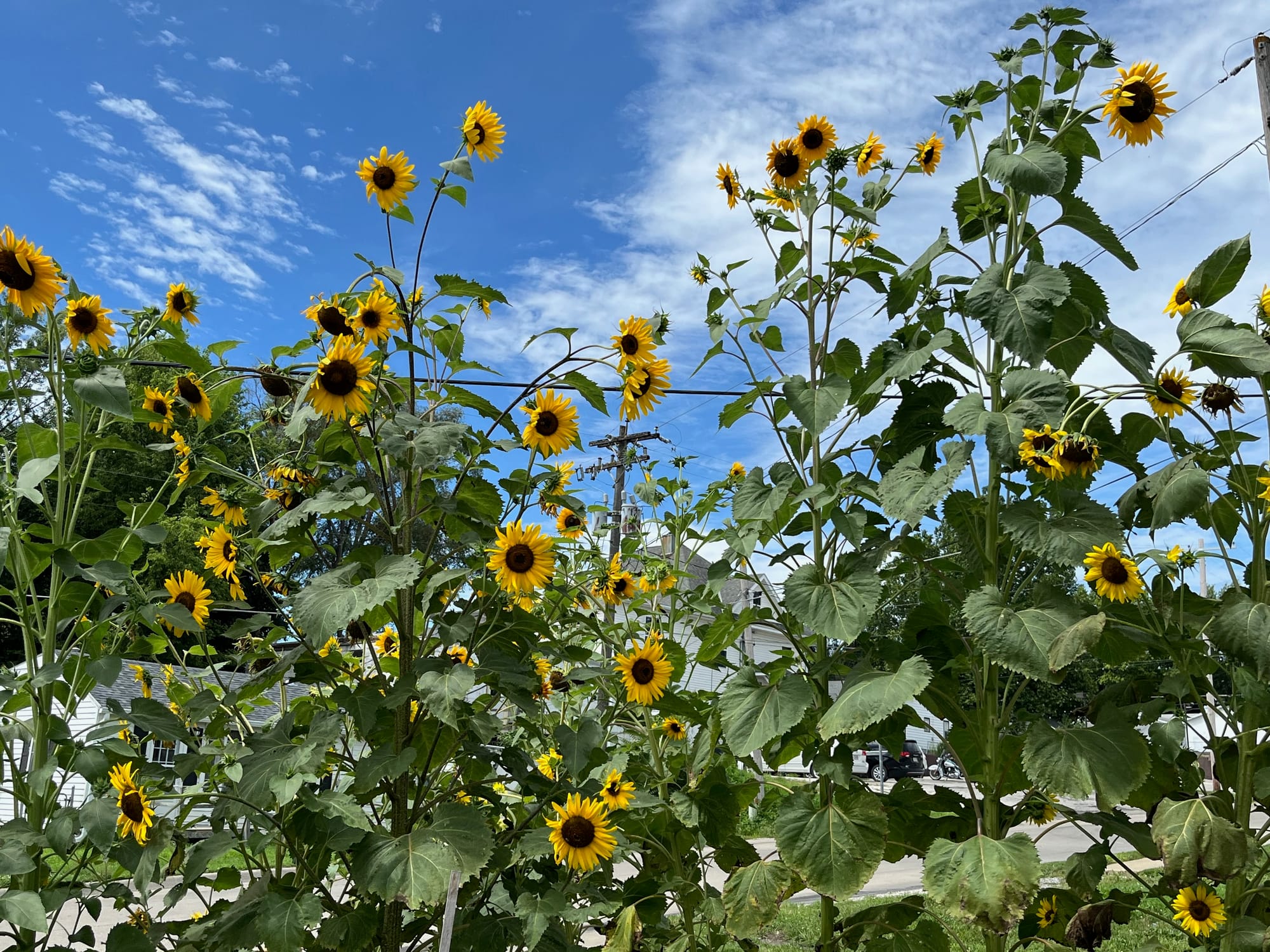
I only kept these sunflowers around because they offer a little privacy on a busy street. I also had a sunflower with a mammoth flower head that could feed a dinosaur. I'll be replanting those seeds again next year.
I made an error one day when I saw what I thought were more volunteer sunflower plants, so I started plucking them out of the ground. After I was done, I realized that was where I had planted the Steve's Sunflower seeds. I replanted all of the plants, unsure if they would survive basically being yanked out of the ground and put back into the ground. I think they all survived, though there was a week when it was touch and go. Most of them were stunted in growth, which wasn't a big deal. They were just shorter versions of the same thing. I did take a photo of one of those double blooms.
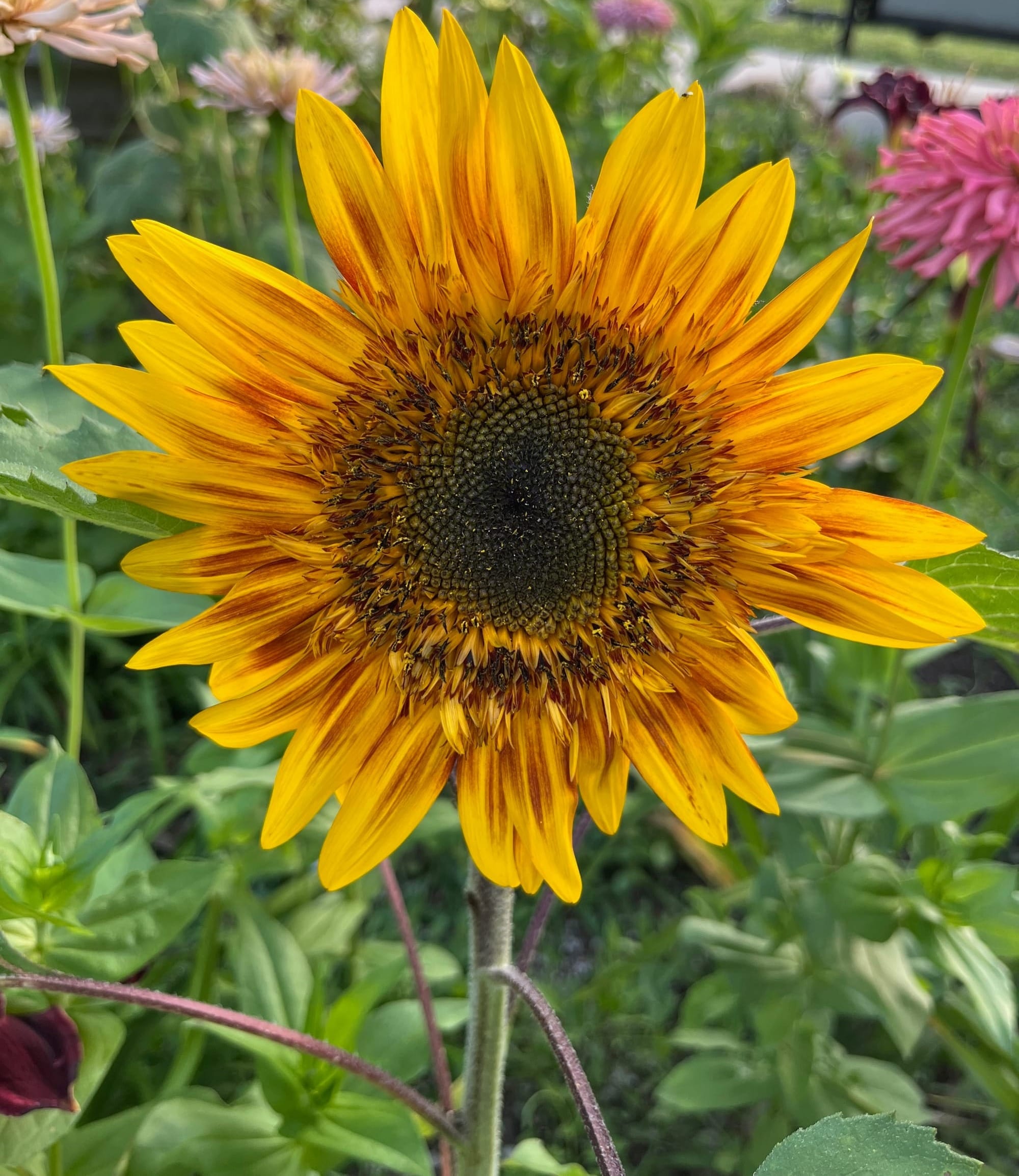
At this point, a few more have bloomed, but without the double petals. You simply save the seeds from the ones with double petals and replant the next year. The non-double flowers were actually pretty nice looking flowers that anyone would be happy to have. They just didn't meet the goals of having double petals.
I have so many things happening with zinnias this year. I need to take the time to start labeling individual plants. I think I'm categorizing them into: 1. anything with purple and 2. anything that's stunning but not purple.
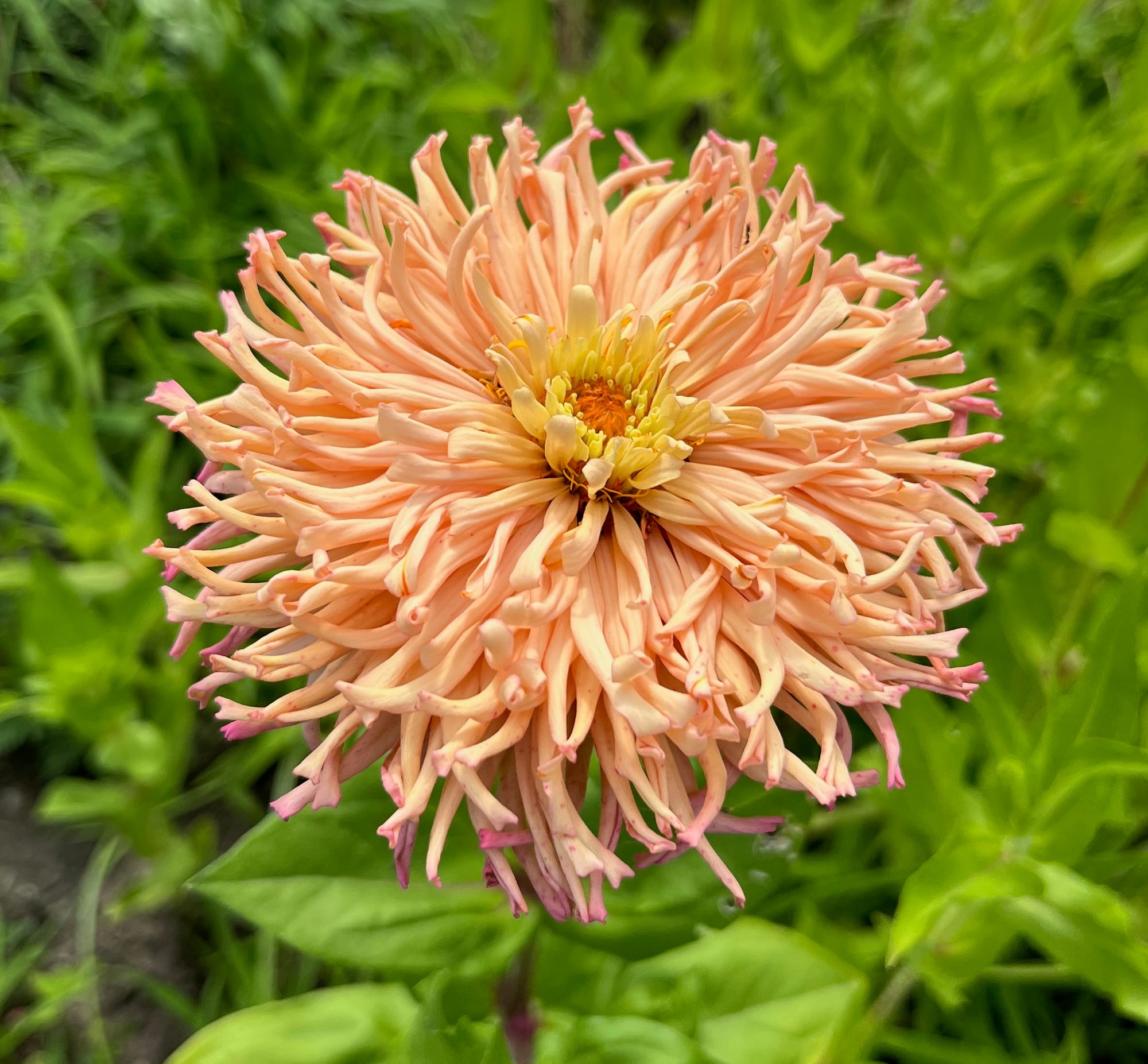

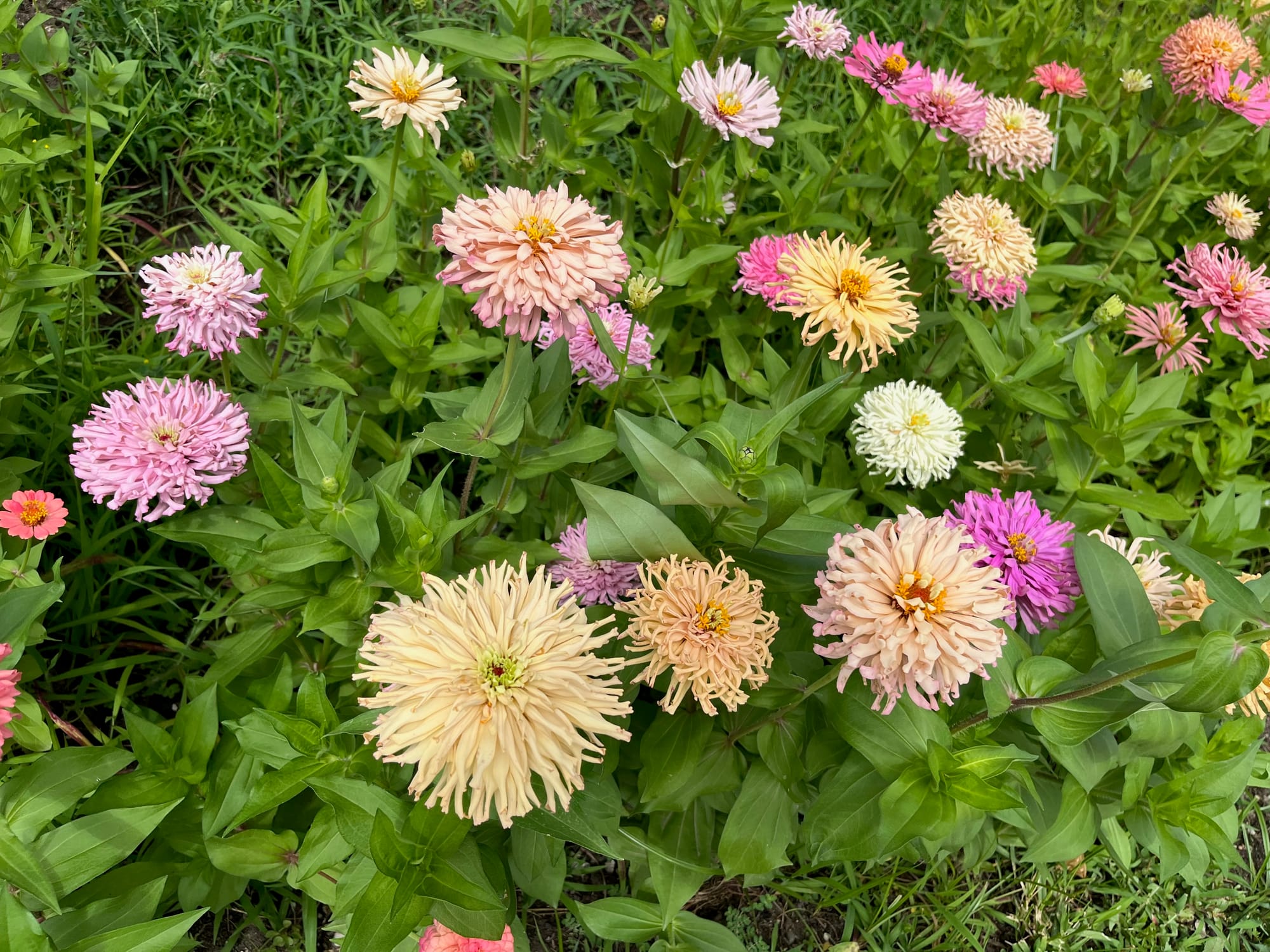
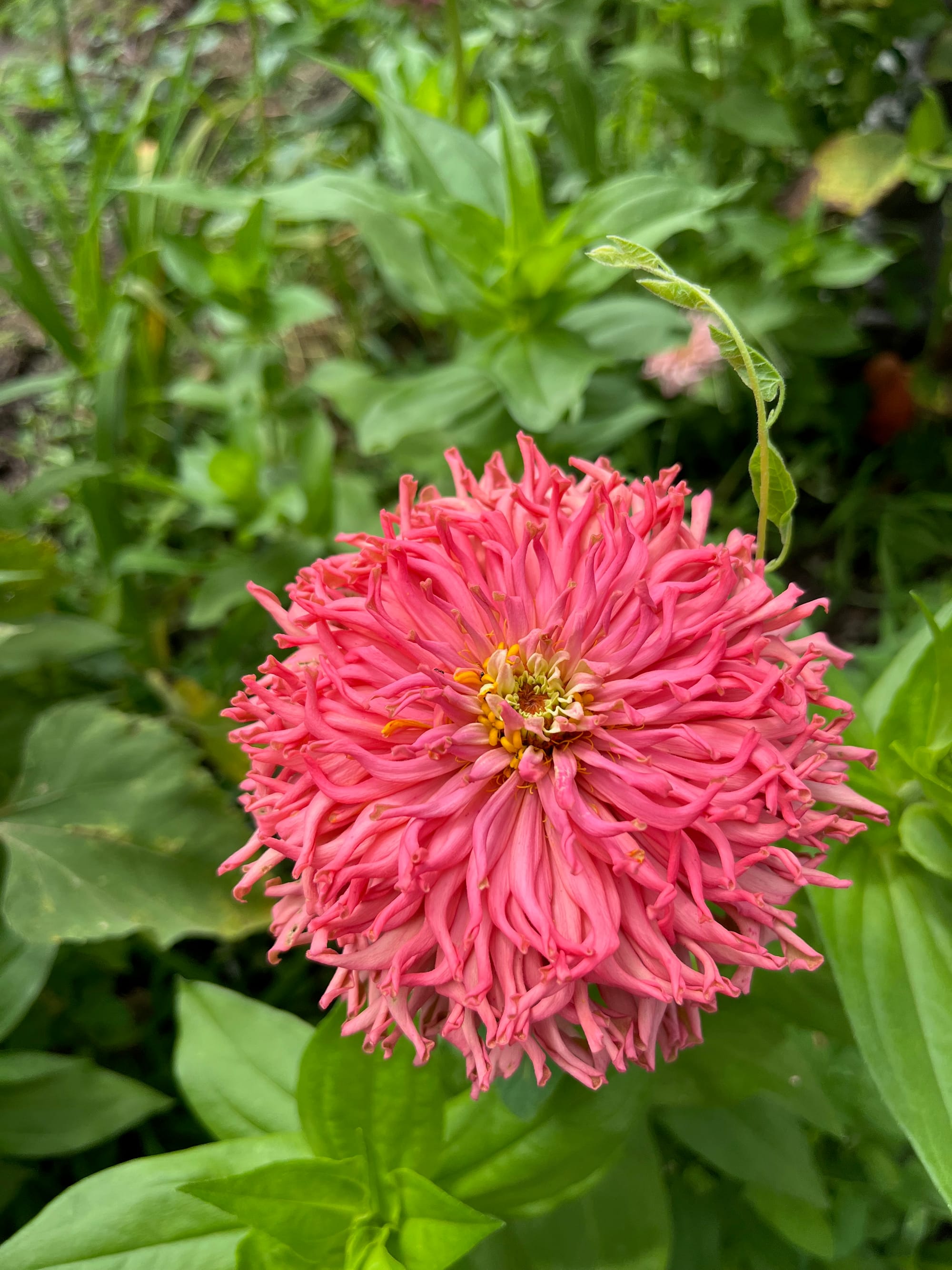
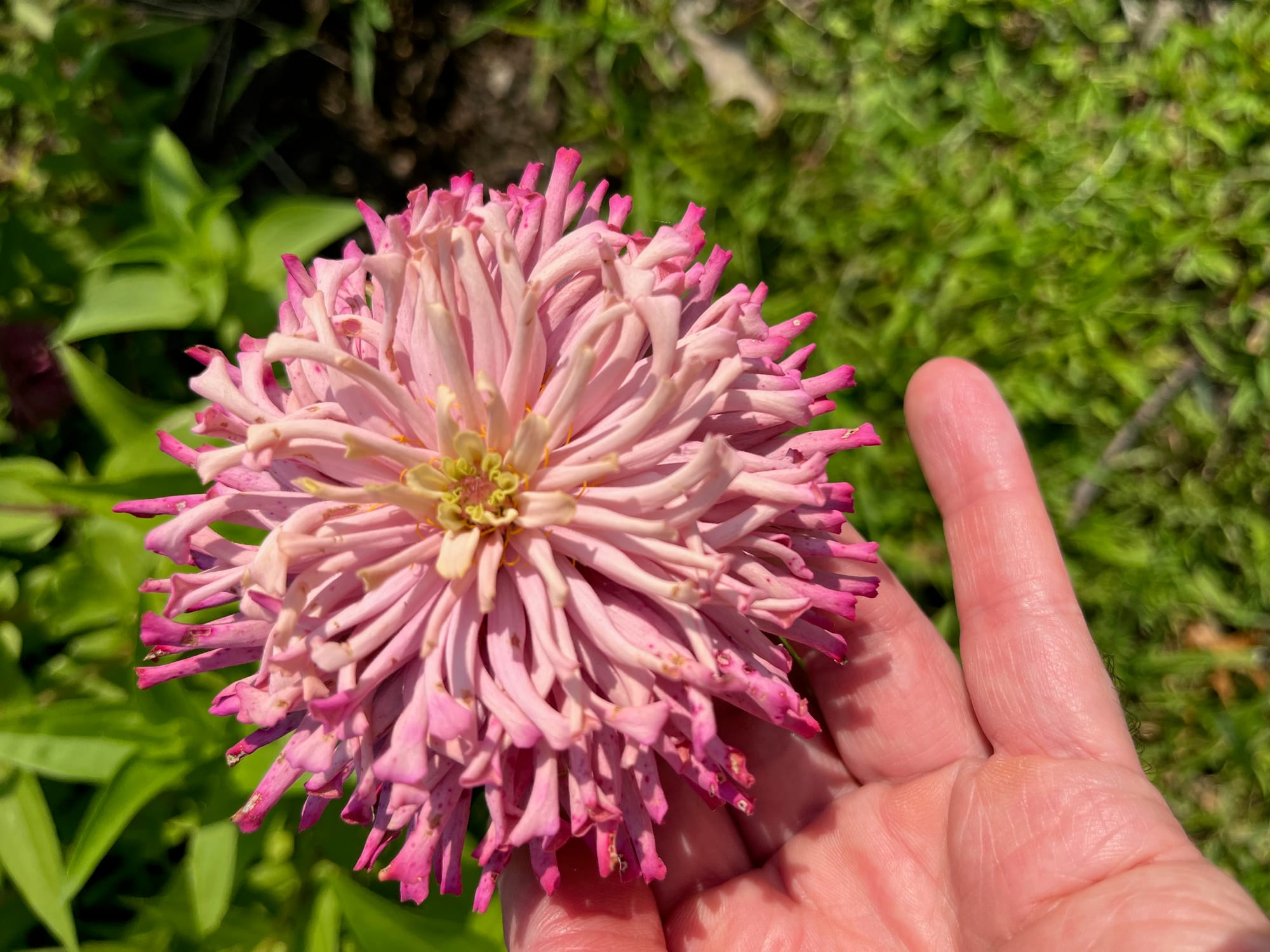
One problem I've had with the zinnias is that the flowers can easily rot with a lot of rain, especially the double cactus kind with all their petals. That's a problem because they aren't photogenic. They still produce seeds.
Speaking of problems.

I had Japanese beetles last year, but it was somewhat manageable because my garden was flooded with water and not much was blooming. This year, they came back with a vengeance. I think every Japanese beetle in the Midwest decided to show up at my garden as things were getting out of control. To deal with them, twice a day I would circle around the garden and tap a flower bloom (with one or multiple beetles) into a cup half full of soapy water. If you can catch them before they fly away, they fall into the water and never escape. They often gather in groups on a single flower, which makes it easy to catch several at once. After a few days of hunting them down, their population was dropping fast. I didn't completely eliminate them, but I might walk through the garden now and only see one beetle. I think the key with these is to just have a cup of soapy water on site and ready to go. If they are in your general area, some will always wander into the garden, but just keep removing them and it won't be overwhelming. (In theory.) They can destroy flowers. I noticed them a lot on roses, dahlias and zinnias. Possibly because they can burrow down into the petals. Not as easy to do with a daylily, gladiola or standard lily.
Overall, the garden has looked pretty good this year, but the plan has been a mostly dahlia garden with some flowers worked in that I'm hybridizing. What really happened is that a lot of flowers like zinnias, sunflowers, gladiolas, and lilies have done well enough to take center stage. A lot of the lily bulbs I planted last year started blooming for the first time this year. Because I haven't lived in the Midwest in decades, I didn't realize gladiolas survived the winters here. Or maybe I'm just lucky. But they all did, and I have quite a few established gladiolas that were showing like crazy. Even a basic white gladiola is impressive in a mass that is four feet tall. I found the ones I bought online from bulb sellers, such as the Dutch and Holland ones, had huge plant size and decent coloration. The bulbs I purchased in bulk at local garden centers were smaller plants with smaller flowers, but they have a really impressive range of bright colors. Either way you go, you can't go wrong if the bulbs are fresh.
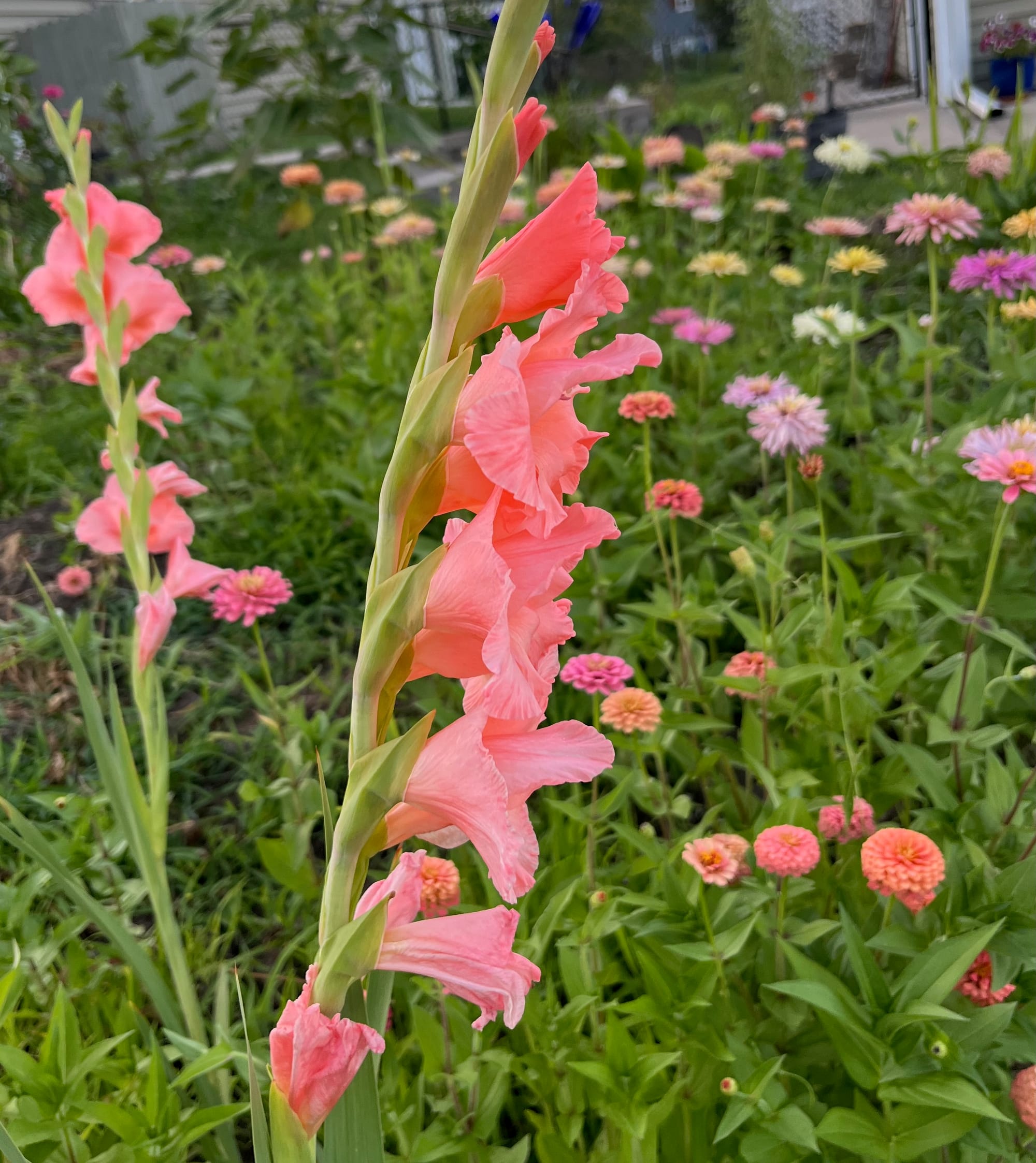
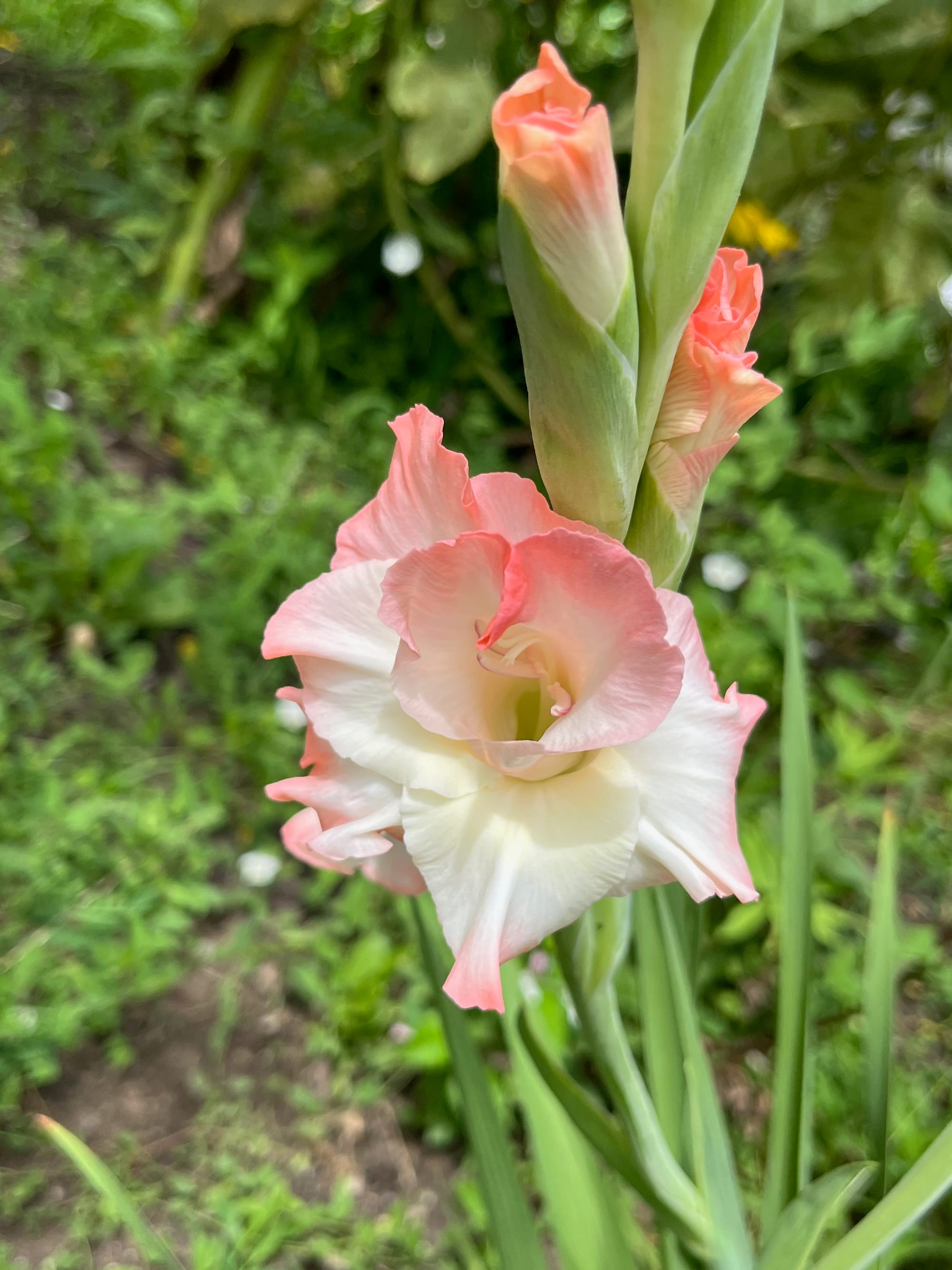
I will probably need to do a special article on dahlias later in the season after my plants get more developed and start blooming. I did have a few blooms here and there, like the Café au Lait I bought from Ace Hardware (of all places, for a couple dollars per tuber clump). I think because the Spring was so mild, there hasn't been enough hot sunlight to get these plants fired up to full growth yet. Next year they will be fully established tuber clumps. Unless it's a particularly large tuber mass, I probably won't divide them because that can slow down how fast the plants get established and grow. The cactus dahlia below started blooming in late June, which is pretty good for a dahlia. That happened because I started it from an existing clump. Even the Café au Lait dahlias were a small clump, not a single tuber.
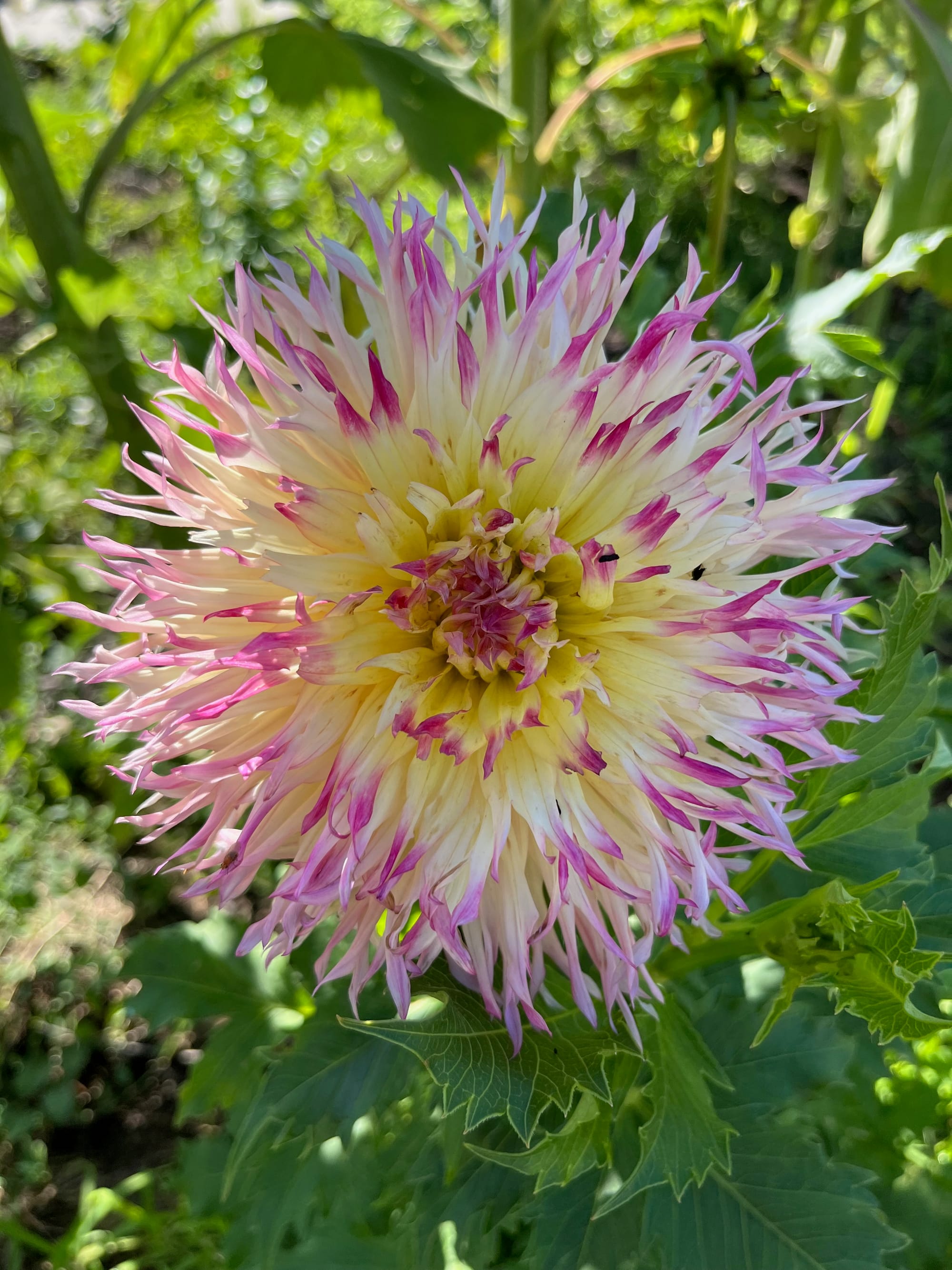
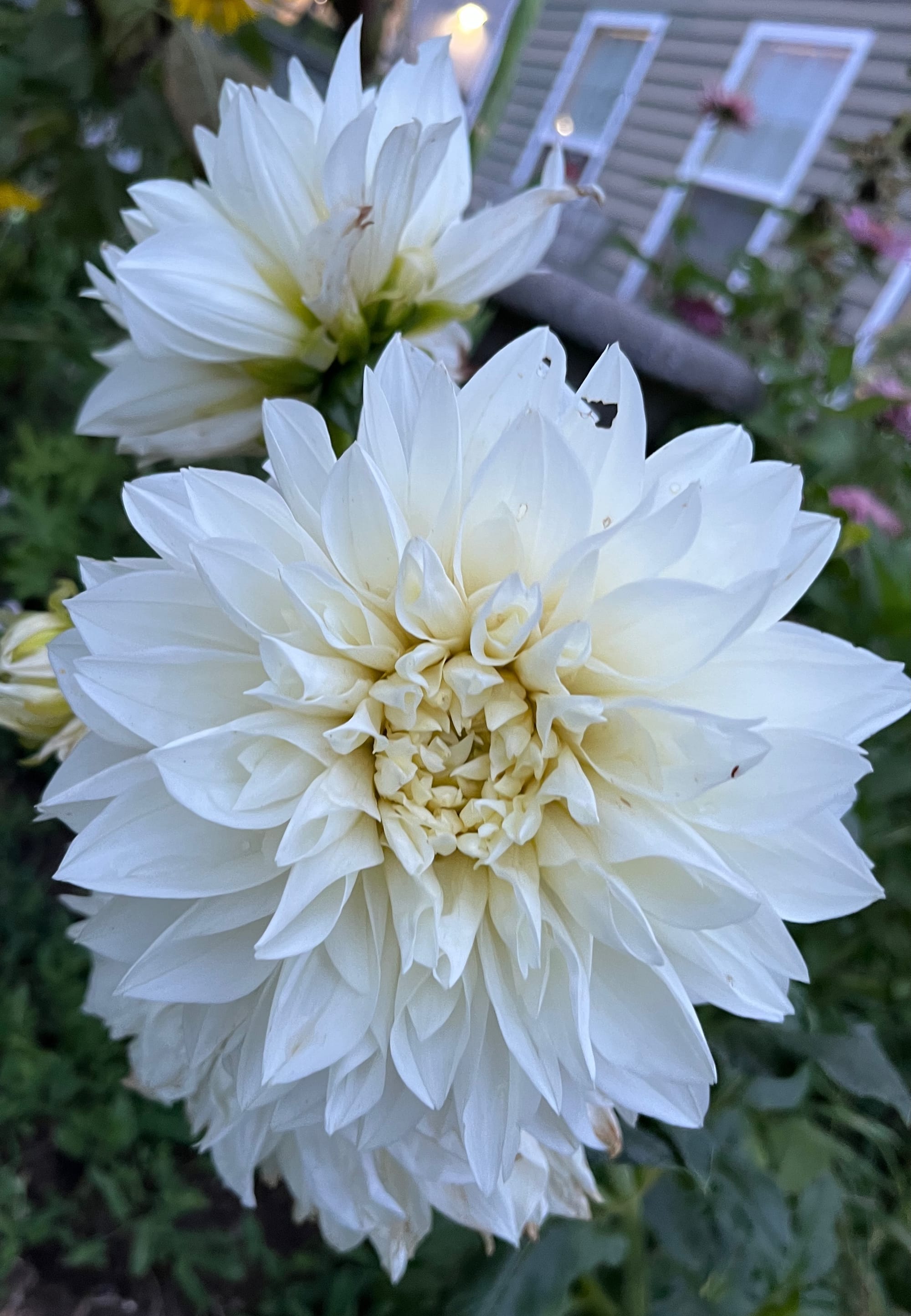
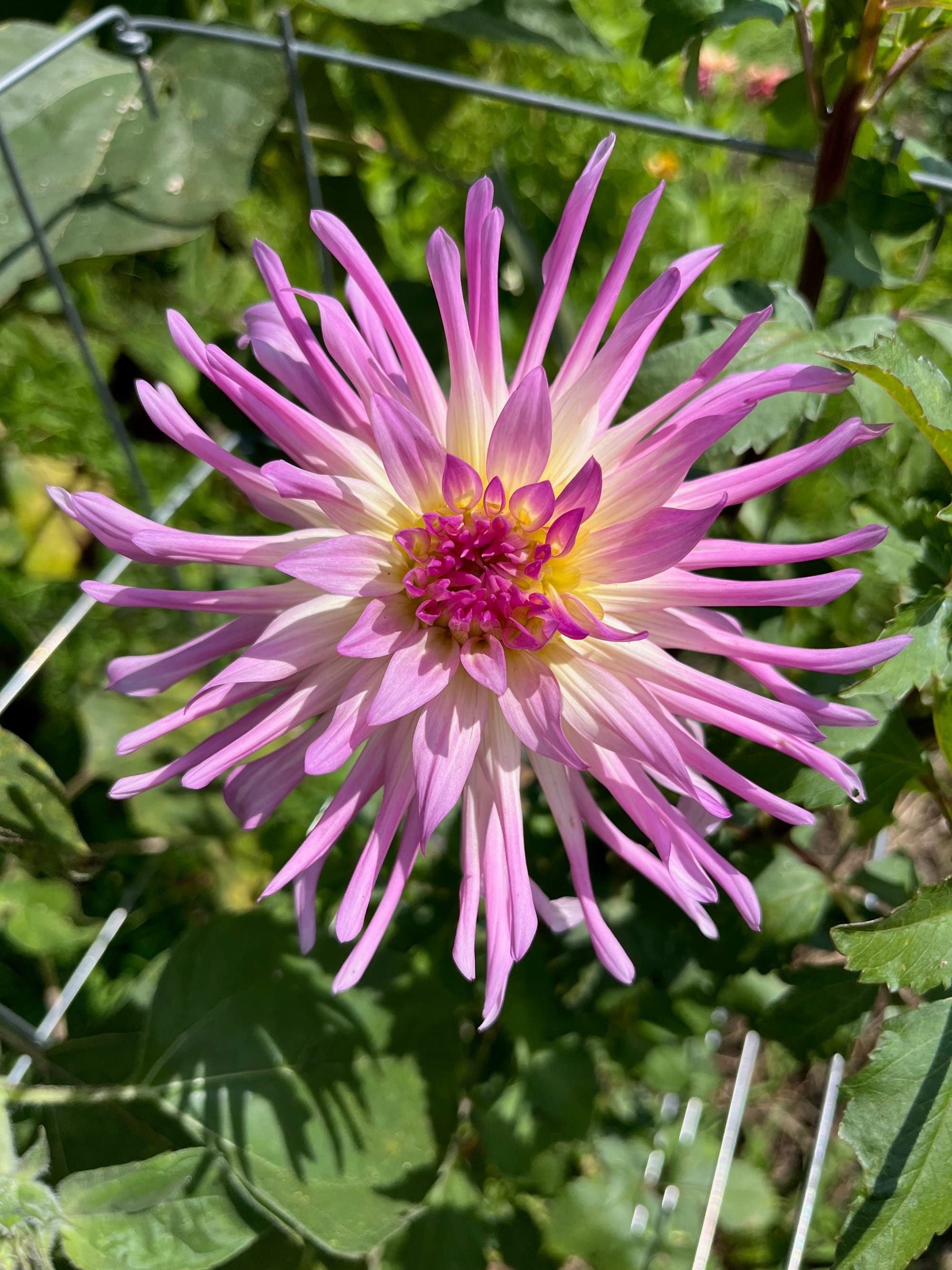
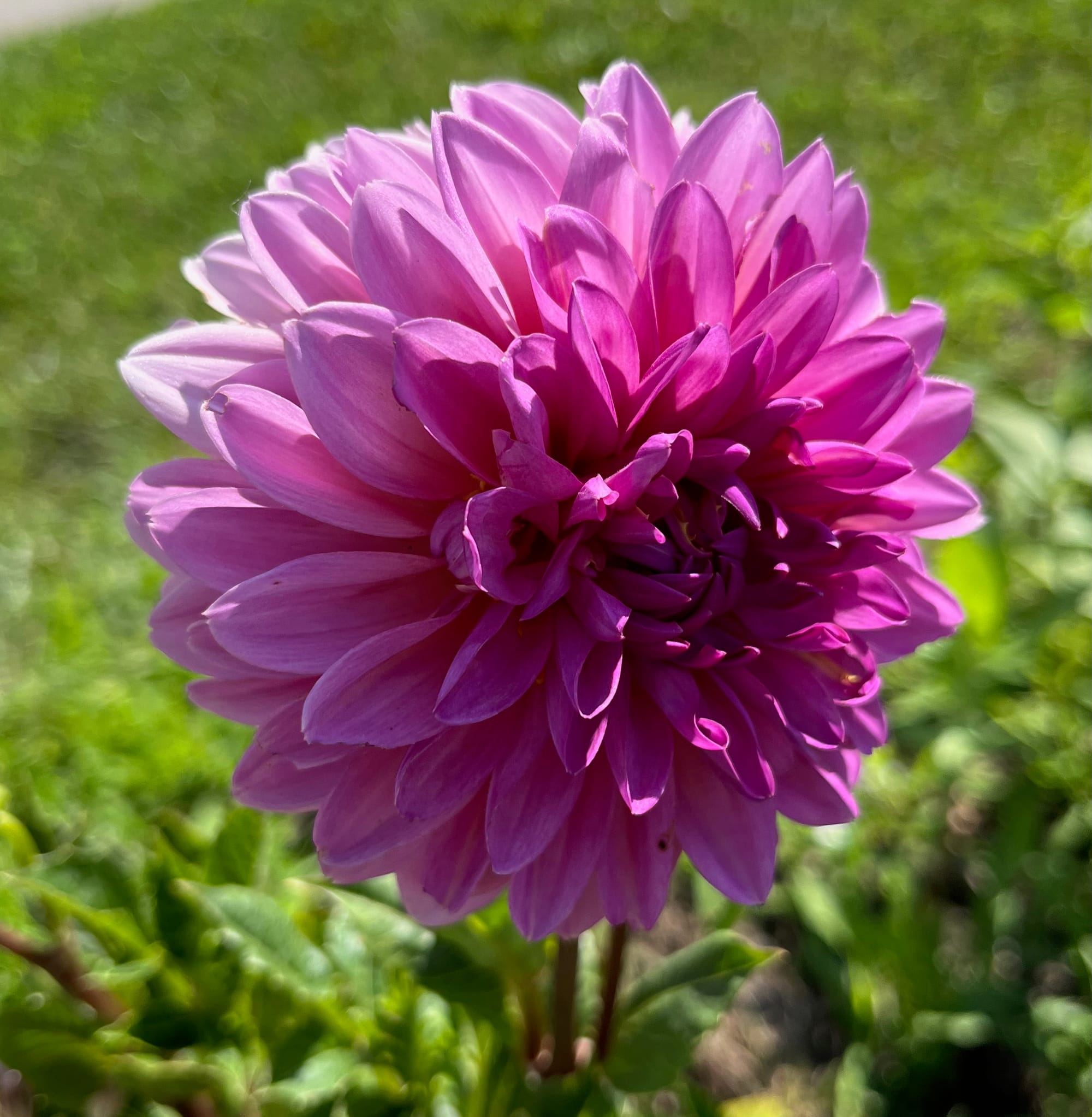
Another flower I planted this year that I haven't grown before is the basketflower (Plectocephalus americanus). It seemed to split between purple and white colored flowers, but has a nice bloom texture. I might try these again next year, but in a different color combination. The only problem I had with these was that they seemed to easily get tangled into growing weeds, and it was therefore easy to accidentally yank them out with a handful of weeds. If you haven't tried these before, I do recommend them for something different. I think these are the kinds of flowers that were once popular but fell out of favor at some point, so you have to go looking for them. I think they're distant cousins of bachelor's buttons, and some seed sellers might even mislabel them as bachelor's buttons.
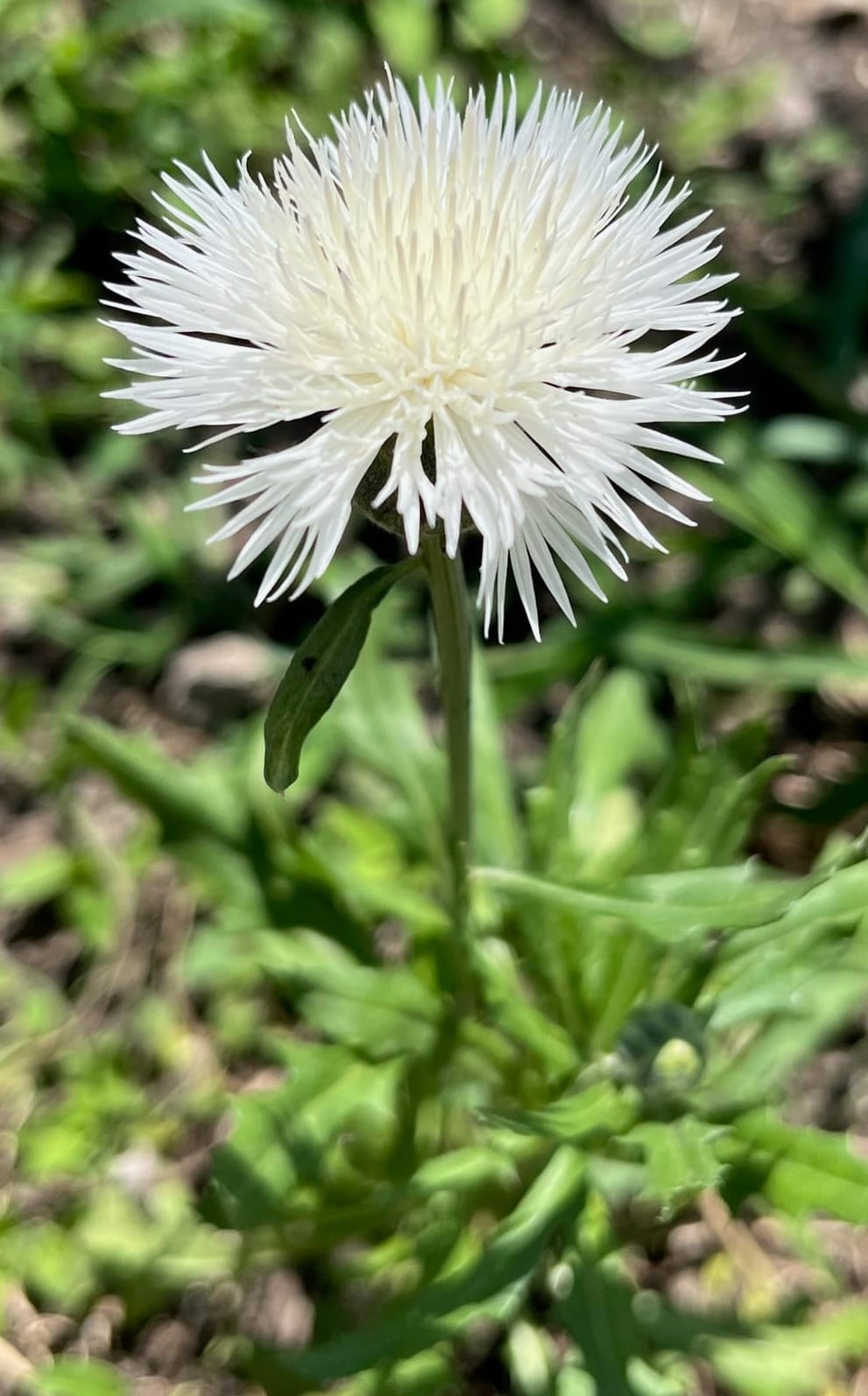
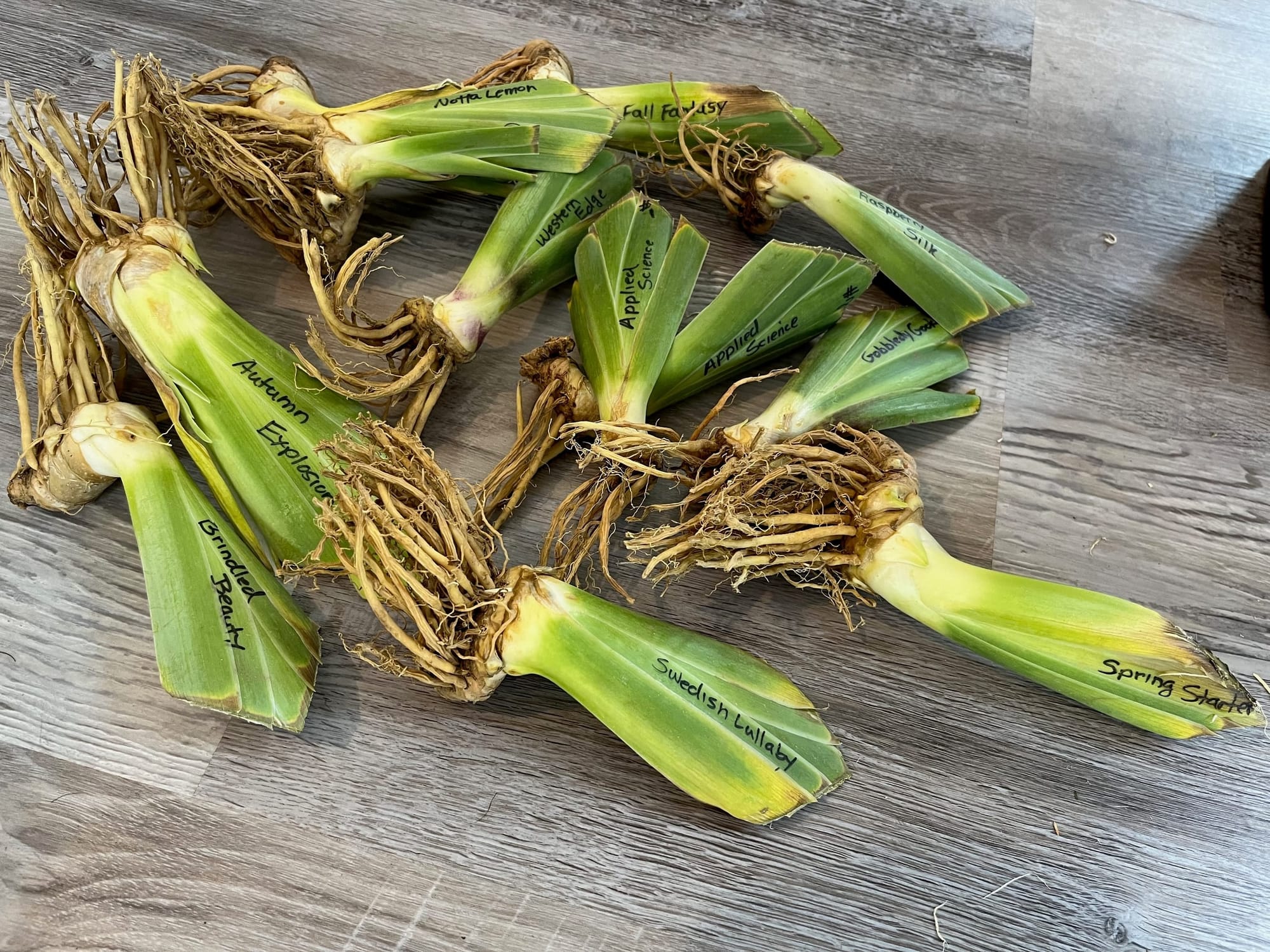
After having my mind blown this Spring by the unbelievable bearded irises in this area, I decided I had to get some to hybridize myself. I possibly went overboard by purchasing from two different sellers. (Sutton and South Jersey) Both sent me a great selection of unique rhizomes. This will also fill in a blank in the blooming schedule. As many gardeners know, you want the timing for blooms to happen so that something is always in bloom. My weak spot has been early Spring since I typically raise things like dahlias that don't get started until Summer. I'm also planning on adding some plants like tulips and daffodils just for the early color. Otherwise, it can seem like the flowering season lasts about three months of the year. When I lived in New Mexico, I did grow a lot of bearded irises, but never hybridized them. They were quite spectacular, but I had varieties that were left over from unsold shop inventory. Even though the bearded iris bloom season is fairly short, I got a couple reblooming irises for my upcoming hybridizing project. My thought is that if I can extend their blooming season or get a couple more blooms later in the Fall as they rebloom, that would be a good trait to have.
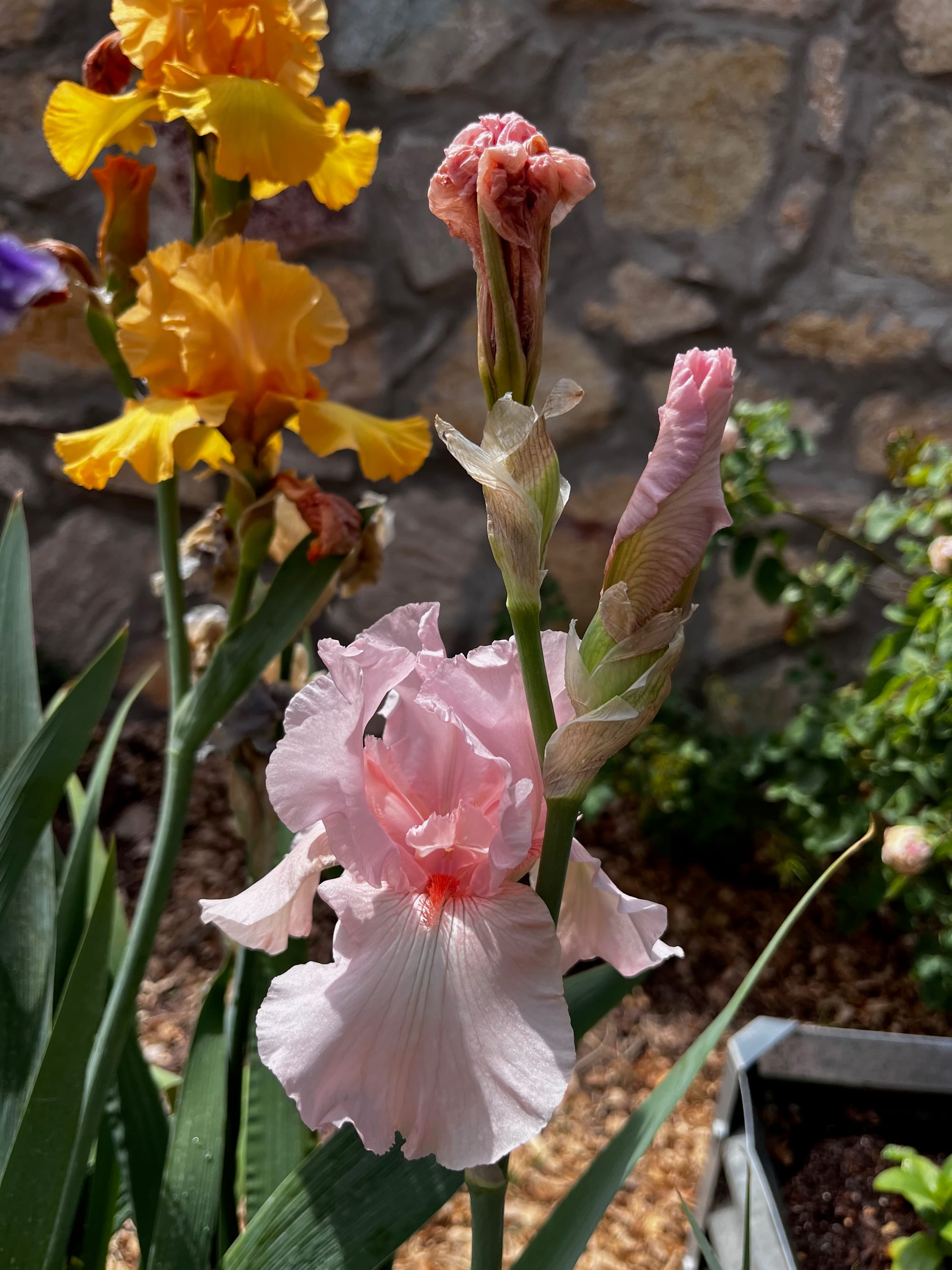
© Copyright Terry Aley
The Aley Acres seed shop on Etsy.
Dahlias, Notes from a Gardener book on Amazon.
Floral Art and Landscape Painting Etsy shop.
TikTok, some gardening posts.
